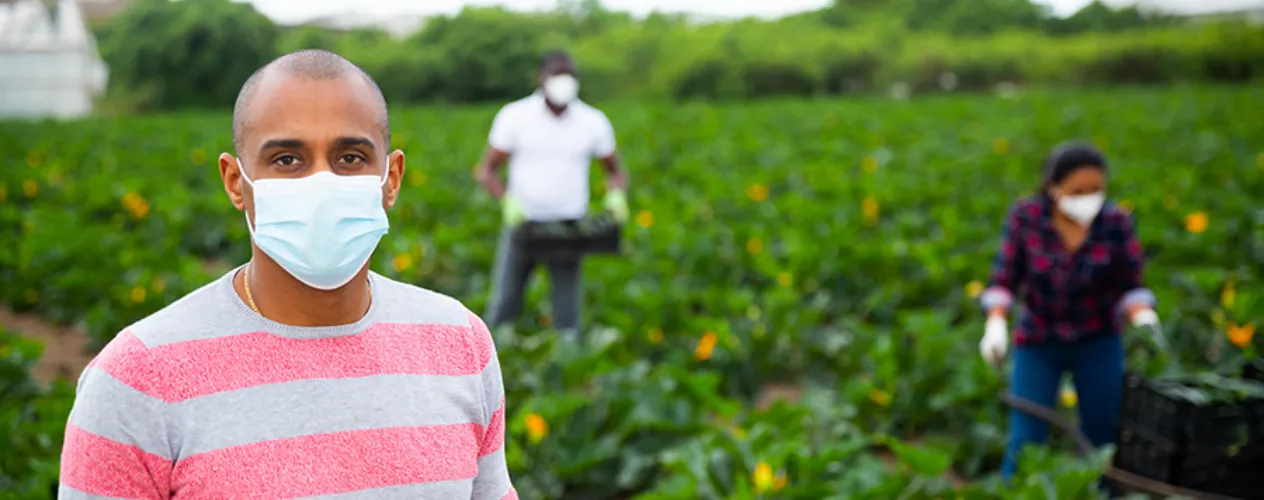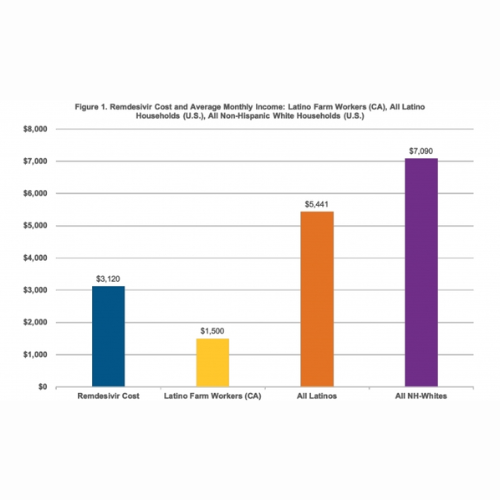UCLA Fielding School researchers find COVID-19 punishes Latinos for hard work and larger families
Dr. David Hayes-Bautista and Dr. Paul Hsu have found that Latino Californians have suffered during the COVID-19 pandemic because of their employment.

Latinos in the U.S. have created the world’s eighth-largest economy. How did they do it? Essentially, through hard work and larger families. Yet these very elements that enabled them to build the world’s eighth-largest economy also make Latinos a special target of COVID-19.
Latinos’ strong work ethic means that Latino households have more wage earners per household than non-Hispanic white households. Nationally, Latinos have an average of 1.6 wage earners per household, compared to 1.2 for non-Hispanic white households. This means that Latino households have more adults leaving the house every day, who are then often exposed to coronavirus-positive clients and co-workers during work hours.
“Office-based wage earners have been able to minimize their exposure to coronavirus infection by sheltering at home and working online,” said Dr. David E. Hayes-Bautista, UCLA Fielding School of Public Health professor of health policy and management and professor of medicine at the UCLA David Geffen School of Medicine. “But Latinos are over-represented in occupations that require wage earners to leave their homes and interact with co-workers and clients, such as farm workers and grocery store clerks.”
These Latino wage earners then go home to households that have more children in them. On average, there are 1.0 children per Latino household, but only 0.5 children in non-Hispanic white ones, according to the report "COVID-19 Punishes Latinos for Hard Work and Larger Families," co-written by Hayes-Bautista and published by the UCLA Center for the Study of Latino Health and Culture.
The Centers for Disease Control (CDC) has noted that up to half of COVID-infected children may be asymptomatic; that is, they have the virus, but do not show symptoms that would put them under surveillance.
“Children with COVID-19 may have mild, non-specific symptoms, or no symptoms at all,” said co-author Dr. Paul Hsu, UCLA Fielding School of Public Health assistant professor of epidemiology. “But they can still transmit the virus from one adult to others.”
Therefore COVID-19 has two increased opportunities to infect Latino households: more wage earners who can be exposed to the virus at work and bring the infection home with them, and more children who can spread infection to family members while remaining asymptomatic themselves.
Because they typically have more wage earners and more children, Latino households contain nearly one more person per unit than non-Hispanic white households.
So, in effect, COVID-19 punishes Latino households for working hard—which exposes more wage earners to infection—and for having more people, especially children, per household.
Since March of 2020, Latinos have held many of the essential jobs that have kept California well-fed and functioning. Unfortunately, their reward has been the highest rate of infections and deaths in the state.
Contact: Adriana Valdez, (310) 794-0663, cesla@ucla.edu
The UCLA Fielding School of Public Health, founded in 1961, is dedicated to enhancing the public's health by conducting innovative research, training future leaders and health professionals from diverse backgrounds, translating research into policy and practice, and serving our local communities and the communities of the nation and the world. The school has 631 students from 26 nations engaged in carrying out the vision of building healthy futures in greater Los Angeles, California, the nation and the world.
Faculty Referenced by this Article

Dr. Anne Rimoin is a Professor of Epidemiology and holds the Gordon–Levin Endowed Chair in Infectious Diseases and Public Health.
Nationally recognized health services researcher and sociomedical scientist with 25+ years' experience in effectiveness and implementation research.

Dr. Ron Andersen is the Wasserman Professor Emeritus in the UCLA Departments of Health Policy and Management.

EMPH Academic Program Director with expertise in healthcare marketing, finance, and reproductive health policy, teaching in the EMPH, MPH, MHA program

Dr. Joseph Davey is an infectious disease epidemiologist with over 20 years' experience leading research on HIV/STI services for women and children.

Robert J. Kim-Farley, MD, MPH, is a Professor-in-Residence with joint appointments in the Departments of Epidemiology and Community Health Sciences

Dr. Michelle S. Keller is a health services researcher whose research focuses on the use and prescribing of high-risk medications.

Professor of Community Health Sciences & Health Policy and Management, and Associate Dean for Research













































































































